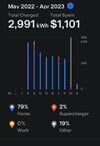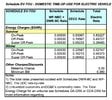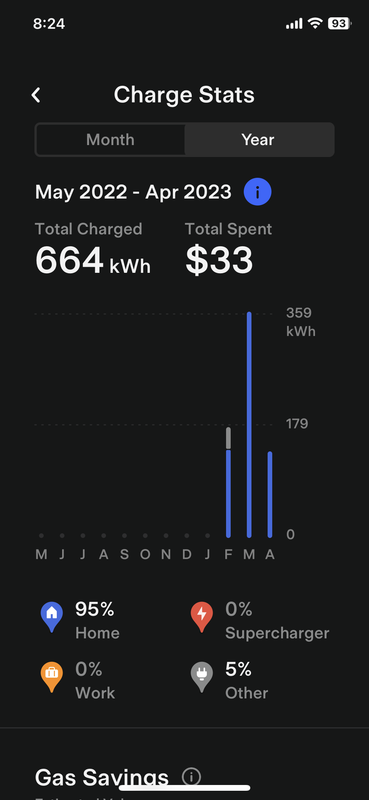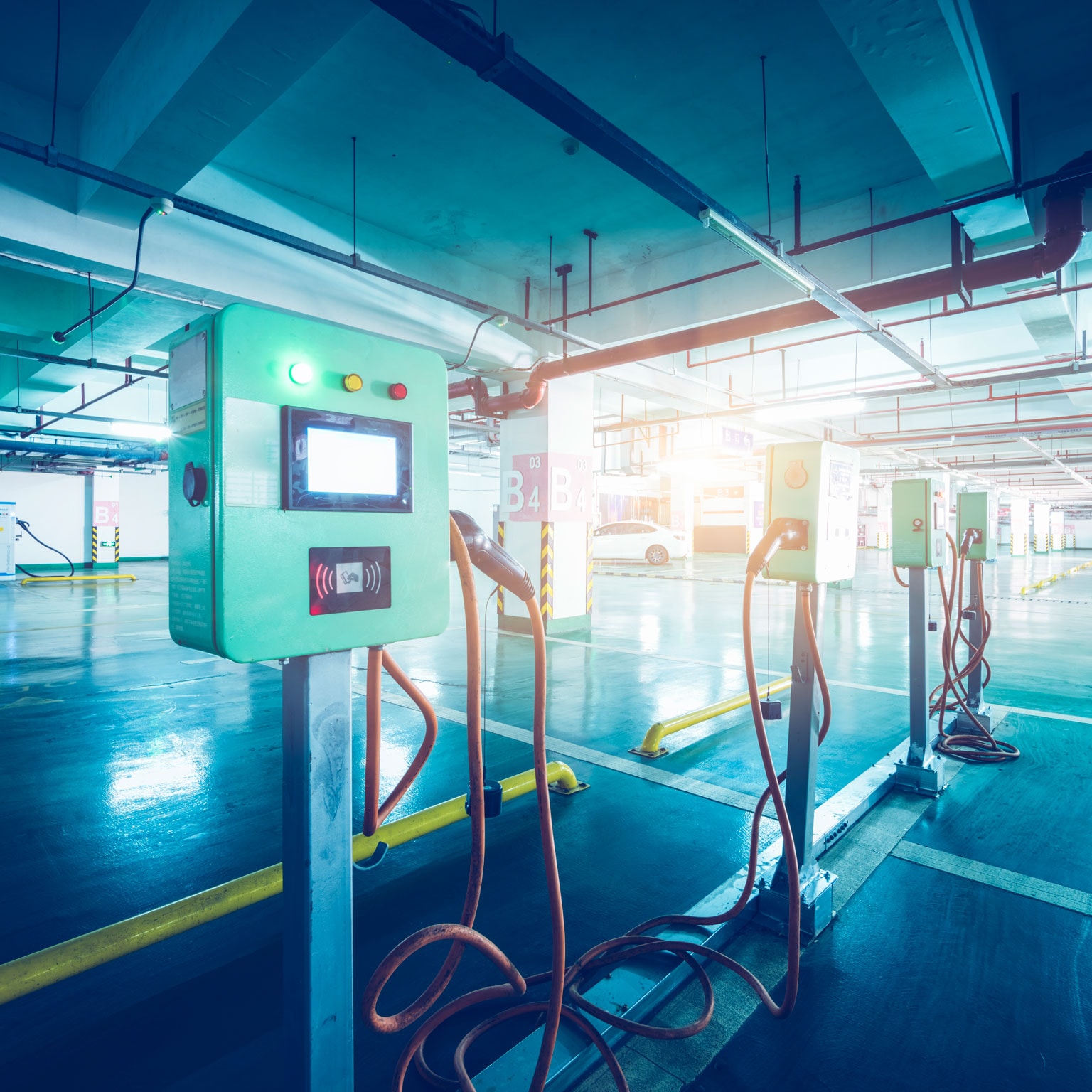This is a recommendation for anybody who charges at home to see if they can get a better rate from their electric utility.
Where I live, just north of Chicago, we have the option to switch our billing method with Commonwealth Edison to hourly pricing, rather than paying a flat $.13/kWh at all times. We actually had a greener middleman supplier, where we paid a little more than the standard rate to have all our electric use made up for with green energy credit purchases. I felt a little bad for giving that up, but our grid here is supplied by 68% renewables, so I didn't lose a lot of sleep over that. Even without making any changes to our habits (before getting an EV) switching to hourly pricing saved us about $125 a year, in a 2,400sf house with 5 people.
But it makes a bigger difference when charging a car. Sometimes rates surge as high as $.30/kWh, so I usually check the current rate before I start charging. ComEd has a page where you can see current and past rates in 5 minute intervals so I always just have a tab open on my laptop and/or phone and it takes 2 seconds to check. 95% or more of the time that I check, rates are between 2 and 3¢ a kWh, and once in a while they go negative. When you have to be careful then is during peak usage times – typically hot summer days when everybody has their AC on- so we avoid charging then. But the vast majority of the time, this means I can put 200 miles of range on the car for about $1.50. Tough to beat- except when rates go negative and you get paid a dollar or so to charge, that's fun. The other day rates went negative so I went around and did a load of laundry and ran the dishwasher, really raking it in! (I probably netted 7 or 8¢!)
As I understand it, I am leveraging the concept of peak shaving, which the utility uses to manage a surplus of energy when demand is low: Rates go negative to incentivize industry and (now) homeowners to level out the demand on the grid and match it with the supply, reducing their procurement costs, as it is hard for them to anticipate and manage fluctuations. They can only ramp down energy production so quickly when demand drops, so they pay you to take extra juice off the grid. Decentralization of the grid – the doubling of solar panels on homes in the last three years – will help with this also. (Every time I hear about some cool program ComEd has that seems to benefit the consumer, I dig deeper and find out the state puts these programs into law to compensate for past trangressions- riping off customers, bribery scandals, etc, but I'll take it- among the benefits of living in a blue state with tightly regulated utilities, and guess what, they still manage to make plenty of money.)
So, see if your area has something like this, and if not reach out to a legislator. It's the way of the future.
Our savings are higher than average because my wife has been charging for free at work the last year or so, but still:


Where I live, just north of Chicago, we have the option to switch our billing method with Commonwealth Edison to hourly pricing, rather than paying a flat $.13/kWh at all times. We actually had a greener middleman supplier, where we paid a little more than the standard rate to have all our electric use made up for with green energy credit purchases. I felt a little bad for giving that up, but our grid here is supplied by 68% renewables, so I didn't lose a lot of sleep over that. Even without making any changes to our habits (before getting an EV) switching to hourly pricing saved us about $125 a year, in a 2,400sf house with 5 people.
But it makes a bigger difference when charging a car. Sometimes rates surge as high as $.30/kWh, so I usually check the current rate before I start charging. ComEd has a page where you can see current and past rates in 5 minute intervals so I always just have a tab open on my laptop and/or phone and it takes 2 seconds to check. 95% or more of the time that I check, rates are between 2 and 3¢ a kWh, and once in a while they go negative. When you have to be careful then is during peak usage times – typically hot summer days when everybody has their AC on- so we avoid charging then. But the vast majority of the time, this means I can put 200 miles of range on the car for about $1.50. Tough to beat- except when rates go negative and you get paid a dollar or so to charge, that's fun. The other day rates went negative so I went around and did a load of laundry and ran the dishwasher, really raking it in! (I probably netted 7 or 8¢!)
As I understand it, I am leveraging the concept of peak shaving, which the utility uses to manage a surplus of energy when demand is low: Rates go negative to incentivize industry and (now) homeowners to level out the demand on the grid and match it with the supply, reducing their procurement costs, as it is hard for them to anticipate and manage fluctuations. They can only ramp down energy production so quickly when demand drops, so they pay you to take extra juice off the grid. Decentralization of the grid – the doubling of solar panels on homes in the last three years – will help with this also. (Every time I hear about some cool program ComEd has that seems to benefit the consumer, I dig deeper and find out the state puts these programs into law to compensate for past trangressions- riping off customers, bribery scandals, etc, but I'll take it- among the benefits of living in a blue state with tightly regulated utilities, and guess what, they still manage to make plenty of money.)
So, see if your area has something like this, and if not reach out to a legislator. It's the way of the future.
Our savings are higher than average because my wife has been charging for free at work the last year or so, but still:






